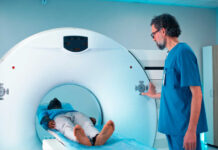
A study has proposed that a wrist-worn device could aid in identifying the initial indicators of Alzheimer’s disease before they progress to significant cognitive impairment. With approximately six million adults in the US affected by Alzheimer’s, early detection, while there is no known cure for the condition, enables individuals to receive symptom management therapies, along with essential support and caregiving services.
Researchers estimate that approximately 22% of individuals aged 50 and above globally have some stage of Alzheimer’s disease. With this figure expected to rise, there is a concerted effort to identify early warning signs of the disease, as medications can offer assistance in the initial stages.
Early detection and treatment of advanced Alzheimer’s disease is crucial due to its irreversibility. Previous research indicates that cognitive, motor, and sensory changes associated with Alzheimer’s can manifest years before clinical symptoms appear.
However, existing cognitive tests have limitations such as
- Time-consuming nature
- Low sensitivity in early stages
- Susceptibility to learning effects rendering repeat testing ineffective
- Subjective analysis requirements
Although imaging techniques offer promise, they are currently expensive and invasive.
Role of Wrist-Worn Devices
Wearable sensing technology presents a potential solution. These devices can capture data on gait, movement patterns, heart rate, sleep patterns, and other relevant parameters. For example, a UK pilot study demonstrated that inexpensive sensors worn on the body could detect changes in walking patterns and behavioral alterations, crucial indicators of early dementia.
The advantages of wearable devices include:
- Easy availability
- Instant connectivity for real-time data retrieval
- Increasing sensitivity with the use of multiple sensors
- Capability to detect both physical and cognitive symptoms
- Minimal burden on healthcare systems
- Flexibility in measurement approaches, allowing for passive or prompted monitoring.
A recent study from Johns Hopkins Bloomberg School of Public Health explored the potential of monitoring daily activity patterns through a wrist-worn device to detect early signs of Alzheimer’s disease.
This technology, known as an actigraph, resembles a wristwatch and utilizes accelerometers to track movement. The study, funded by the National Institute on Aging, involved 82 cognitively healthy older adults from the Baltimore Longitudinal Study of Aging.
The researchers found notable differences in activity patterns between individuals with detectable beta-amyloid in their brains (considered a hallmark of Alzheimer’s) and those without. Specifically, the “amyloid-positive” group exhibited higher average activity during early afternoon hours and less variability in activity during certain time windows.
While these findings are promising, it’s important to note that interpreting data from mainstream fitness trackers for Alzheimer’s detection isn’t recommended at this stage. Further research is needed to validate these findings and explore other potential digital signatures of Alzheimer’s that wearable devices might detect.
Moreover, experts caution against overreliance on wrist-worn devices for diagnosing Alzheimer’s, emphasizing the need for additional research to understand whether similar patterns could indicate other conditions, such as sleep disorders, which are common in Alzheimer’s patients.


















